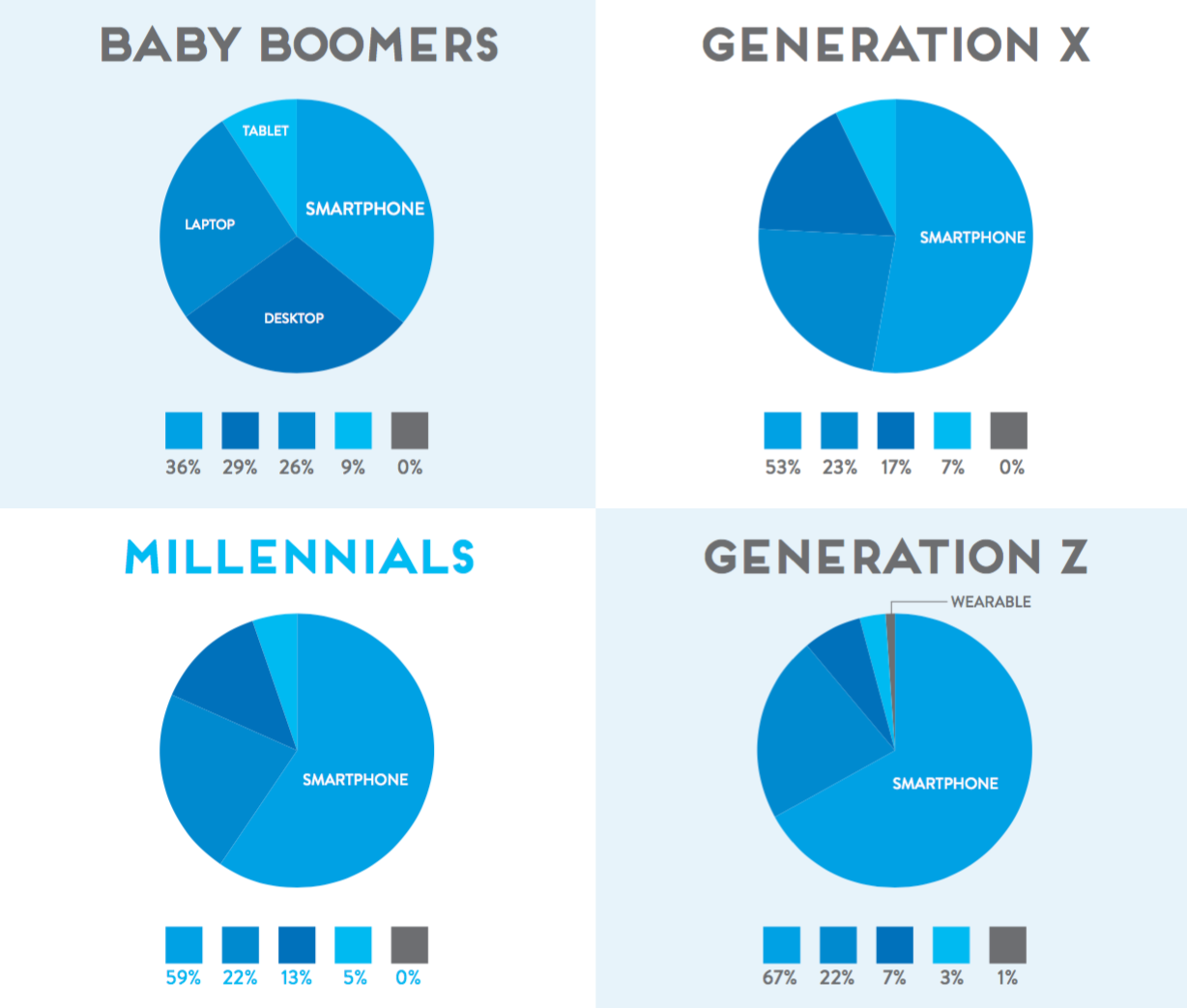
How Do Millennial & Gen Z Consumers Use Email?
Millennials and Gen Z can be tough nuts to crack. Because they’re early adopters of new technologies and channels, they can be difficult demographics for brands to keep up with.
Although every few years, a new social channel manifests claiming to be the new way to connect with younger generations, a recent study by Bluecore and NAPCO Research has found that most of these consumers don’t actually turn to social channels to learn about new products from brands. Instead, they use social channels as a place to connect with family and friends.
Melissa Bell, Vice President of Vox Media explains, “At the end of the day, [social media] is a place where people want to share things that matter to them, whether it’s a news story or their child walking.”
So if these consumers are using social media channels to engage with friends and family, what channels are they using to engage with brands?
It turns out, the answer is email.
To help retailers better understand how Millennials and Gen Z are using email and what brands can do to reach this highly coveted audience, let’s dig into some key findings from our study
Email is the most preferred channel, across all demographics
When consumers were asked how they would prefer to receive brand communications, an overwhelming number chose email (68%). In fact, across all demographics (Millennials and Gen Z included), respondents preferred email more than all other channels combined.
How would you prefer to receive brand communications?


Email feels the most personal of all communication channels
Whether these numbers surprise you or not, the “what” of data isn’t always as important as the “why.”
So why is email so greatly preferred over other communication channels?
It has everything to do with personalization. With rising consumer expectations, delivering personalized experiences is at the top of every marketer’s mind. But when it comes to actually finding out how to tactically deliver that experience, marketers have been stumped. Turns out, the channel that delivers personalization best has been under the marketer’s nose this whole time. When consumers were asked which communication channel feels the most personal, the results were almost duplicative to preferences.
Of the channels from which you receive communication from brands, which feel most personal?

On average, 68% of respondents chose email as the most personal channel. Although younger audiences found channels such as Facebook, in-store and text to provide some greater personalization, email still overwhelmingly outperforms all other channels for both Millennials (64%) and Generation Z (60%).
This shows that for all consumers, even younger generations, personalization is an incredibly important aspect of communication and email is the channel that delivers that experience best.

Gmail is the provider of choice for Millennials & Gen Z
When looking at preferred email providers, Gmail reigns as the most popular choice across generations.
What’s more interesting is how drastically Gmail’s market share increases as we look at younger audiences.
While 35% of Baby Boomers use Gmail, adoption increases only slightly for Generation X (39%), then jumps 22% for Millennials (61%) then finally peaks with Generation Z at 70%.
Strong Gmail adoption for younger generations likely has to do with what the email landscape looked like when these consumers joined the market.
When Baby Boomer and Generation X consumers began using email, most providers were legitimate contestants in the race for market share. But year after year, Gmail continued to innovate while others lagged behind.
This trend ultimately positioned Gmail as the thought-leader of the space, and adoption followed. By the time Millennial and Generation Z consumers were old enough to join the email market, Gmail had established itself as the obvious provider of choice, which is reflected in its popularity today.
What provider do you use for your personal email?

Consumers check their email on the go with smartphones
When we look at which devices consumers are using to access their messages, not surprisingly, we find that email is largely being read on mobile devices.
Again, this is true for all demographics. More than half (53%) of all consumers say their smartphone is the primary device on which they check email, which increases when taking a look at today’s younger audiences:
67% of Generation Z and 59% of Millennials report using their smartphone for email.
On average, consumers’ second option for reading email is a laptop (24%) and third is a desktop (18%). Interestingly, tablets lag behind at only 6%.
What device do you primarily use to check your personal email?

What should retailers do with this information?
Clearly, based on these results, mobile is probably how your audience will be consuming your email content. At a fundamental level, brands should always make sure emails are responsive and optimized for a mobile experience, especially with Gmail. Tools like Bluecore are great resources to ensure this consistency for all your email communications. But that’s just the beginning of what brands can and should do.
Take the experience a step further and help mobile viewers use those emails in-store. It’s not just about the online experience – email is a great forum to leverage and invite cross-channel engagement, such as promoting in-store tech uses, barcode scanning, and mobile-only deals.
The trend of connecting online and offline experiences will only grow, and since consumers are already checking email on the go, leveraging email is a natural first step.





